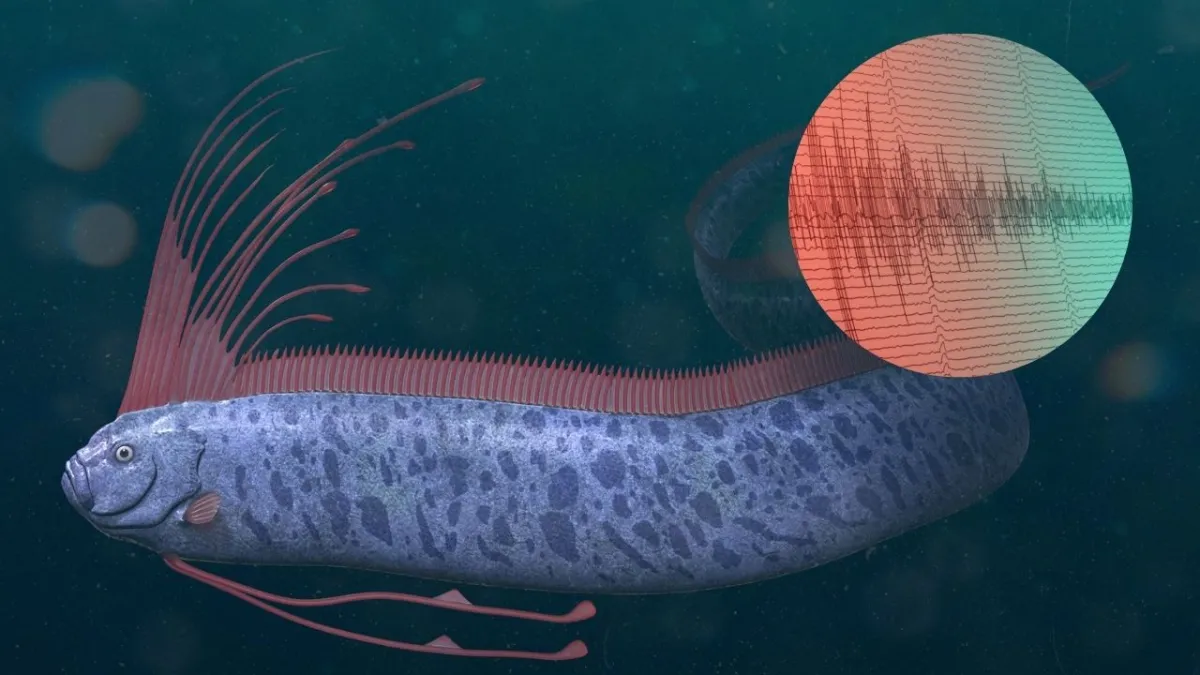
The recent sighting of an oarfish off the coast of San Diego, California, has generated a great commotion among the inhabitants of the region. This fish, scientifically known as regalecus glesne, is a marine creature that lives in the depths of the ocean and is rarely seen on the surface.
Its appearance has given rise to a series of speculations and myths, especially those related to its supposed ability to predict earthquakes.
The oarfish is one of the longest bony fish species in the world, and can reach up to 17 meters in length. Its body is thin and elongated, with a dorsal fin that extends along its back. This fish lacks scales and its skin is slimy and silvery, giving it a distinctive appearance. It lives in the mesopelagic zone of the ocean, at depths of up to 1,000 meters, where sunlight does not reach.
Getty Images
>>> We recommend: The gigantic oarfish found in Ecuador: is it true that it predicts earthquakes?
Why do they say that oarfish predict natural disasters?
The belief that oarfish can predict earthquakes has its roots in Japanese culture, according to Ben Frable, collections manager at the Scripps Institute of Oceanography, in conversation with CNN. In Japan, this fish is known as “Ryugu no tsukai”, which translates as “messenger of the sea god’s palace.” According to legend, the appearance of this fish on the surface is a harbinger of natural disasters, such as earthquakes and tsunamis.
This belief became especially popular after the 2011 Tohoku earthquake and tsunami, when several sightings of oarfish were reported off the Japanese coast in the months leading up to the disaster.
Despite the popularity of these myths, there is no scientific evidence to support the claim that oarfish can predict earthquakes.

Getty Images
There are several theories that could explain why oarfish appear on the surface. One of the most accepted is that These fish, which normally live in the deep ocean, can be pushed to the surface due to changes in ocean conditions, such as underwater currents or variations in water temperature.
Another theory suggests that oarfish may be sick or injured, preventing them from swimming deeper and bringing them to the surface.
>>> We recommend: This is what the end of the world would look like, according to AI: impressive video shows it
Oarfish found in California, United States
In 2024, two notable sightings of oarfish have been recorded off the coast of California, a phenomenon that has captured the attention of both scientists and the general public. The first occurred in La Jolla Cove, north of downtown San Diego, where kayakers and divers found a 3.6-meter-long oarfish. This specimen was transferred to the NOAA Fisheries Science Center in La Jolla for further study.
The second sighting took place on a beach in Encinitas, where another oarfish, nearly 10 feet long, was found. This finding was made by Alison Laferriere, a doctoral candidate at the Scripps Institution of Oceanography at the University of California, San Diego.
Source: https://www.noticiascaracol.com/mundo/pez-remo-aparece-2-veces-en-california-2024-mitos-sobre-terremotos-que-lo-rodean-so35


